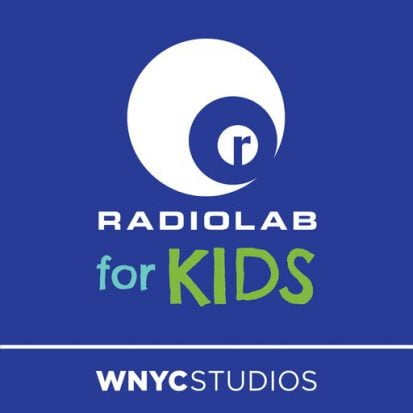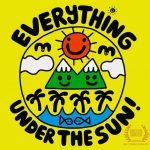
Zoozve
Leave a reviewRadiolab co-host Latif Nasser was putting his child to sleep one day when he noticed a poster of the solar system on the wall. It showed that Venus had a moon called Zoozve. When he looked it up, the internet told him that Venus did not have a moon. And searching “Zoozve” gave him a bunch of Czech results about zoos. This moment sets Latif off on a curiosity odyssey. What is the mystery behind this moon? Turns out, it’s both a moon and not a moon. And we get to name one.
© WNYC Studios | 00:28:50
|
Full episode description
 Episode One: The Mastermind: An Octopus Heist
Episode One: The Mastermind: An Octopus Heist
This is an Episodic show. You can listen to it in any order, but episode one is always a great place to start.Full Episode description
Radiolab co-host Latif Nasser was putting his child to sleep one day when he noticed a poster of the solar system on the wall. It showed that Venus had a moon called Zoozve. When he looked it up, the internet told him that Venus did not have a moon. And searching “Zoozve” gave him a bunch of Czech results about zoos. This moment sets Latif off on a curiosity odyssey. What is the mystery behind this moon? Turns out, it’s both a moon and not a moon. And we get to name one.
And now that you know all about quasi-moons, we have some fun news! Radiolab, along with the official governing bodies of space, want YOU to pick your favorite name for one of Earth’s newly discovered quasi-moons. Go to radiolab.org/quasi-moon to vote for the finalists. The winner will be chosen soon, so go help name a MOON!
Special Thanks to Larry Wasserman and everyone else at the Lowell Observatory, Rich Kremer and Marcelo Gleiser of Dartmouth College, and Benjamin Sharkey at the University of Maryland. Thanks to the IAU and their Working Group for Small Bodies Nomenclature, as well as to the Bamboo Forest class of kindergarteners and first graders.
Articles:
Check out the paper by Seppo Mikkola and Paul Wiegert (whose voices are in the episode), along with colleagues Kimmo Innanen and Ramon Brasser describing this new type of object here (https://zpr.io/Ci4B3sGWZ3xi).
The Official Rules and Guidelines for Naming Non-Cometary Small Solar-System Bodies from the IAU Working Group on Small Body Nomenclature can be found here (https://zpr.io/kuBJYQAiCy7s).
All the specs on our strange friend can be found here (https://zpr.io/Tzg2sHhAp2kb).
Check out Liz Landau’s work at NASA’s Curious Universe podcast https://zpr.io/QRbgZbMU2gWW) as well as lizlandau.com
Videos:
Fascinating little animation of a horseshoe orbit (https://zpr.io/A9y6qHhzZtpA), a tadpole orbit (https://zpr.io/4qBDbgumhLf2), and a quasi-moon orbit (https://zpr.io/xtLhwQFGZ4Eh).
Posters:
If you’d like to buy (or even just look at) Alex Foster’s Solar System poster (featuring Zoozve of course), check it out here (https://zpr.io/dcqVEgHP43SJ).
Radiolab was created by Jad Abumrad and is edited by Soren Wheeler. Lulu Miller and Latif Nasser are our co-hosts. Dylan Keefe is our director of sound design. Our staff includes: Simon Adler, Jeremy Bloom, Becca Bressler, W. Harry Fortuna, David Gebel, Maria Paz Gutiérrez, Sindhu Gnanasambandan, Matt Kielty, Annie McEwen, Alex Neason, Valentina Powers, Sarah Qari, Sarah Sandbach, Arianne Wack, Pat Walters and Molly Webster. Our fact-checkers are Diane Kelly, Emily Krieger and Natalie Middleton. Production help from Tanya Chawla. Sound mixing by Joe Plourde.
Sign up for Radiolab for Kids’s newsletter! It includes short essays, recommendations, and details about other ways to interact with the show. Sign up here.
Radiolab for Kids and Terrestrials are supported by listeners like you. Support Radiolab by becoming a member of The Lab today.
Follow Radiolab on Instagram, X Facebook, Threads and TikTok @radiolab.
Support for Terrestrials is provided by the Simons Foundation, the Arthur Vining Davis Foundations, the Kalliopeia Foundation and the John Templeton Foundation.
© WNYC Studiosbop| Status: Active, 48 episodes | Kind: Episodic | Episode URL
The content, Artwork and advertising within this podcast is not owned or affiliated with Sound Carrot and remain the property of their respective owners.








